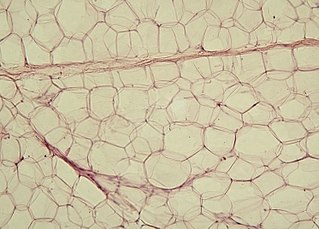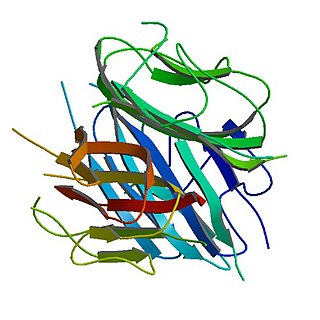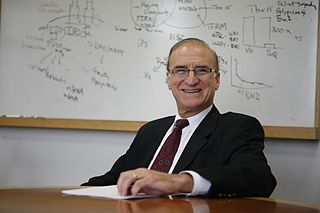Insulin resistance (IR) is considered as a pathological condition in which cells fail to respond normally to the hormone insulin. To prevent hyperglycemia and noticeable organ damage over time, the body produces insulin when glucose starts to be released into the bloodstream, primarily from the digestion of carbohydrates in the diet. Under normal conditions of insulin reactivity, this insulin response triggers glucose being taken into body cells, to be used for energy, and inhibits the body from using fat for energy, thereby causing the concentration of glucose in the blood to decrease as a result, staying within the normal range even when a large amount of carbohydrates is consumed. Carbohydrates comprise simple sugars, i.e. monosaccharides, such as glucose and fructose, disaccharides, such as cane sugar, and polysaccharides, e.g. starches. Fructose, which is metabolised into triglycerides in the liver, stimulates insulin production through another mechanism, and can have a more potent effect than other carbohydrates. A habitually high intake of carbohydrates, and particularly fructose, e.g. with sweetened beverages, contributes to insulin resistance and has been linked to weight gain and obesity. If excess blood sugar is not sufficiently absorbed by cells even in the presence of insulin, the increase in the level of blood sugar can result in the classic hyperglycemic triad of polyphagia, polydipsia, and polyuria. Avoiding carbohydrates and sugars, a no-carbohydrate diet or fasting can reverse insulin resistance.

Leptin is a hormone predominantly made by adipose cells that helps to regulate energy balance by inhibiting hunger. This hormone acts on receptors in the arcuate nucleus of the hypothalamus. In obesity, a decreased sensitivity to leptin occurs, resulting in an inability to detect satiety despite high energy stores and high levels of leptin.
In biology, adipose tissue, body fat, or simply fat is a loose connective tissue composed mostly of adipocytes. In addition to adipocytes, adipose tissue contains the stromal vascular fraction (SVF) of cells including preadipocytes, fibroblasts, vascular endothelial cells and a variety of immune cells such as adipose tissue macrophages. Adipose tissue is derived from preadipocytes. Its main role is to store energy in the form of lipids, although it also cushions and insulates the body. Far from being hormonally inert, adipose tissue has, in recent years, been recognized as a major endocrine organ, as it produces hormones such as leptin, estrogen, resistin, and the cytokine TNFα. The two types of adipose tissue are white adipose tissue (WAT), which stores energy, and brown adipose tissue (BAT), which generates body heat. The formation of adipose tissue appears to be controlled in part by the adipose gene. Adipose tissue – more specifically brown adipose tissue – was first identified by the Swiss naturalist Conrad Gessner in 1551.

Adipocytes, also known as lipocytes and fat cells, are the cells that primarily compose adipose tissue, specialized in storing energy as fat. Adipocytes are derived from mesenchymal stem cells which give rise to adipocytes, osteoblasts, myocytes and other cell types through adipogenesis.

Adiponectin is a protein hormone which is involved in regulating glucose levels as well as fatty acid breakdown. In humans it is encoded by the ADIPOQ gene and it is produced in adipose tissue.

Resistin also known as adipose tissue-specific secretory factor (ADSF) or C/EBP-epsilon-regulated myeloid-specific secreted cysteine-rich protein (XCP1) is a cysteine-rich adipose-derived peptide hormone that in humans is encoded by the RETN gene.

Hyperinsulinemia, is a condition in which there are excess levels of insulin circulating in the blood relative to the level of glucose. While it is often mistaken for diabetes or hyperglycaemia, hyperinsulinemia can result from a variety of metabolic diseases and conditions. While hyperinsulinemia is often seen in people with early stage type 2 diabetes mellitus, it is not the cause of the condition and is only one symptom of the disease. Type 1 diabetes only occurs when pancreatic beta-cell function is impaired. Hyperinsulinemia can be seen in a variety of conditions including diabetes mellitus type 2, in neonates and in drug induced hyperinsulinemia. It can also occur in congenital hyperinsulism, including nesidioblastosis.

Jeffrey M. Friedman is a molecular geneticist at New York City's Rockefeller University and an Investigator of the Howard Hughes Medical Institute. His discovery of the hormone leptin and its role in regulating body weight has had a major role in the area of human obesity. Friedman is a physician scientist studying the genetic mechanisms that regulate body weight. His research on various aspects of obesity received national attention in late 1994, when it was announced that he and his colleagues had isolated the mouse ob gene and its human homologue. They subsequently found that injections of the encoded protein, leptin, decreases body weight of mice by reducing food intake and increasing energy expenditure. Current research is aimed at understanding the genetic basis of obesity in human and the mechanisms by which leptin transmits its weight-reducing signal.
Leukotriene B4 (LTB4) is a leukotriene involved in inflammation. It has been shown to promote insulin resistance in obese mice.

Leptin receptor also known as LEP-R or OB-R is a Type I cytokine receptor, a protein that in humans is encoded by the LEPR gene. LEP-R functions as a receptor for the fat cell-specific hormone leptin. LEP-R has also been designated as CD295. Its location is the cell membrane, and it has extracellular, trans-membrane, and intracellular sections.

The ob/ob or obese mouse is a mutant mouse that eats excessively due to mutations in the gene responsible for the production of leptin and becomes profoundly obese. It is an animal model of type II diabetes. Identification of the gene mutated in ob led to the discovery of the hormone leptin, which is important in the control of appetite.
Adipose tissue is an endocrine organ that secretes numerous protein hormones, including leptin, adiponectin, and resistin. These hormones generally influence energy metabolism, which is of great interest to the understanding and treatment of type 2 diabetes and obesity.
Douglas L. Coleman was a scientist and professor at The Jackson Laboratory, in Bar Harbor, Maine. His work predicted that the ob gene encoded the hormone leptin, later co-discovered in 1994 by Jeffrey Friedman, Rudolph Leibel and their research teams at Rockefeller University. This work has had a major role in our understanding of the mechanisms regulating body weight and that cause of human obesity.
Adipotide, a peptidomimetic with sequence CKGGRAKDC-GG-D(KLAKLAK)2, is an experimental proapoptotic drug that has been shown to cause rapid weight loss in mice and rhesus monkeys. Its mechanism of action is to target specific blood vessels supplying adipose tissue with blood, cause the vessels to shrink and the fat cells fed by those vessels to undergo apoptosis. Adipotide is designed to bind to two receptors, ANXA2 and prohibitin, that are specific to blood vessels supplying white adipose tissue.

Rudolph Leibel is the Christopher J. Murphy Professor of Diabetes Research, Professor of Pediatrics and Medicine at Columbia University Medical Center, and Director of the Division of Molecular Genetics in the Department of Pediatrics. He is also Co-Director of the Naomi Berrie Diabetes Center and Executive Director of the Russell and Angelica Berrie Program in Cellular Therapy, Co-Director of the New York Obesity Research Center and the Columbia University Diabetes and Endocrinology Research Center.

José F. Caro, M.D. is an American physician, scientist, and educator most notable for his research in obesity and diabetes. The Institute for Scientific Information listed him the third most cited investigator in the world in the field of obesity research during the 1991-2000 period for his work on Leptin. Caro is also an artist.

AdipoRon is a selective, orally active, synthetic small-molecule agonist of the adiponectin receptor 1 (AdipoR1) and adiponectin receptor 2 (AdipoR2). It activates AMPK and PPARα signaling and ameliorates insulin resistance, dyslipidemia, and glucose intolerance in db/db mice. Moreover, AdipoRon has been found to extend the lifespans of db/db mice fed a high-fat diet, as well as improve exercise endurance. The compound was discovered by Japanese researchers in 2013 via screening of a compound library, and is the first orally active, small-molecule agonist of the adiponectin receptors to be identified.

Christos Socrates Mantzoros is a Greek American physician scientist, internist - endocrinologist, researcher, Harvard Medical School professor and the editor-in-chief of the journal Metabolism: Clinical and Experimental. He is considered a pioneer and worldwide expert in obesity and metabolism. He has given more than 500 lectures nationally and internationally on these critical topics. His research has resulted in more than 800 publications in Medline, including more than 150 publications under the collaborative Look Ahead Research Group, more than 200 chapters and reviews and has received more than 72,000 citations with an h-index=121 as well as prestigious awards at national and international meetings. He has an H index of 114.
(Ismaa) Sadaf Farooqi FMedSci is a Wellcome Trust Senior Research fellow in Clinical Science, professor of Metabolism and Medicine at the University of Cambridge and a consultant physician at Addenbrooke's Hospital in Cambridge, UK.



















